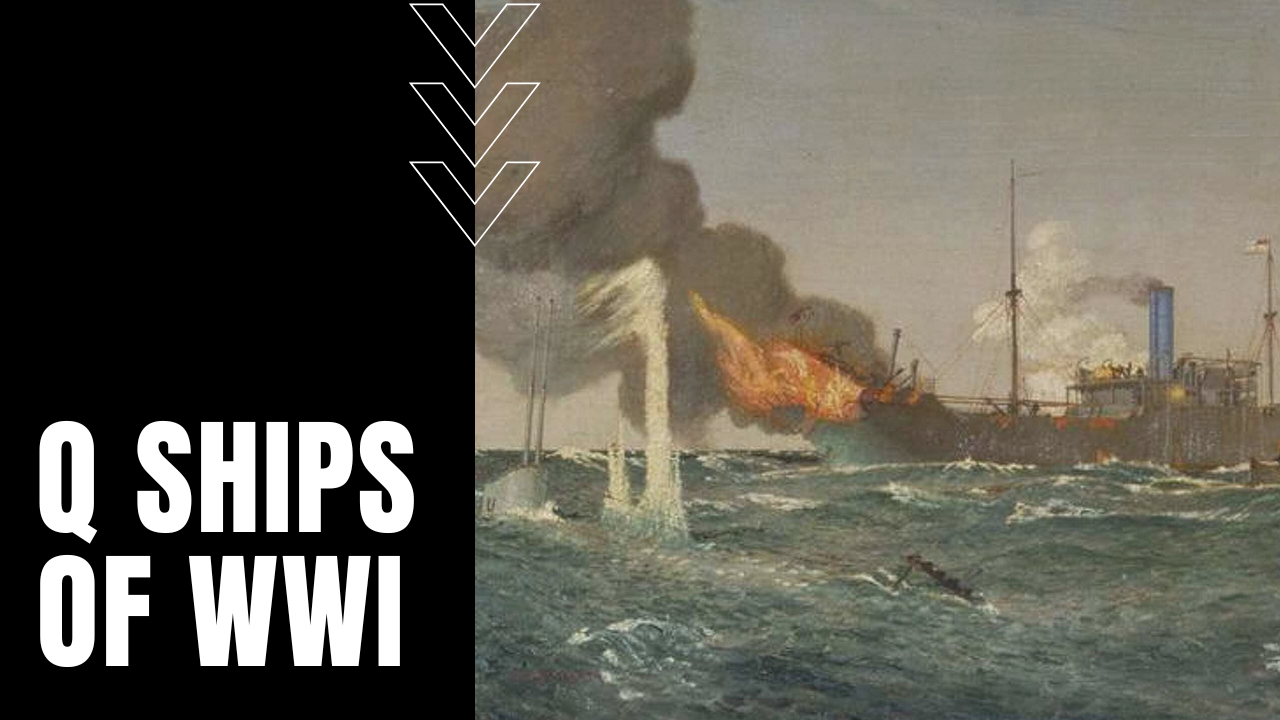Q Ships of World War One

During the four-plus bloody years of the First World War, German advances in submarine warfare wreaked havoc and high anxiety on naval and merchant ships alike, sinking over 6,000 Allied vessels for a total loss of 14,200,000 tons. Led by British Rear-Admiral Gordon Campbell, to counter the ongoing U-boat menace, the British employed an assortment of mystery Q-ships, disguising their hidden war assets within scruffy looking timber ships, tramp freighters, passenger liners, fishing smacks and slow-moving sailing luggers.
A Bold Ruse
Hoisting the colors of neutral nations, Q-ships were fitted with false funnels, while guns were hidden conveniently inside chicken coops and other deck cargo, all in an attempt to lure German U-boat crews in for a closer look, before shedding their masquerade in a fusillade of deadly gunfire. While U-boats posed a deadly threat to maritime traffic, Q-ship crews took open advantage of a U-boat’s inherent limitations.
Highly Inaccurate Weapons
Carried in limited supply within the tight confines of a U-boat, torpedoes were only accurate from a relatively short distance from their intended prey, making them vulnerable to return fire or even ramming should an attacking U-boat surface too soon near an enemy ship. To lure U-boats into their trap, Q-ships conducted staged “panic parties,” as Admiral Campbell described them in his memoir, My Mystery Ships.
Dressed to Fool
Dressed as common deck hands and even women in the case of Q-ship passenger liners, during a panic party, crew and passengers would pretend to abandon a sinking ship, opening fire when a U-boat had drawn sufficiently near, before dropping depth charges when desperate U-boat crews dove for safer waters. Led by professional naval officers, Q-ship crews had to act their parts on a 24/7 basis, oftentimes changing ship names, nationalities and deck silhouettes from one port to the next.
Effective Disguises
On one occasion, even Campbell’s fellow officers failed to recognize him behind his bearded, scruffy persona when he disguised himself as the skipper of a timber ship. Oftentimes, when participants in a panic party took to their lifeboats, they frequently carried a stuffed parrot in a cage, furthering the authenticity of the trap, since merchant crews frequently kept parrots as shipboard mascots and pets, making Q-ships of World War One, some of the gutsiest deceptions in the age of modern warfare.
